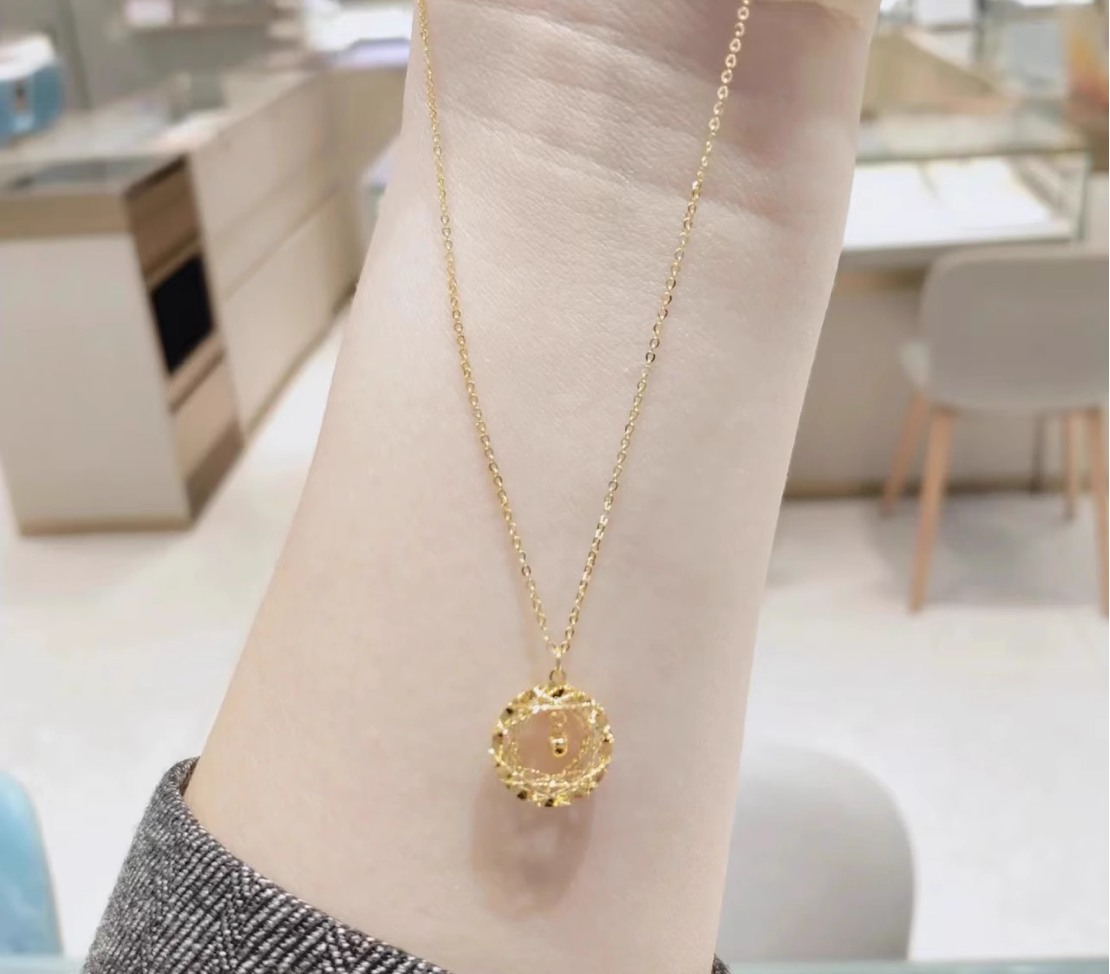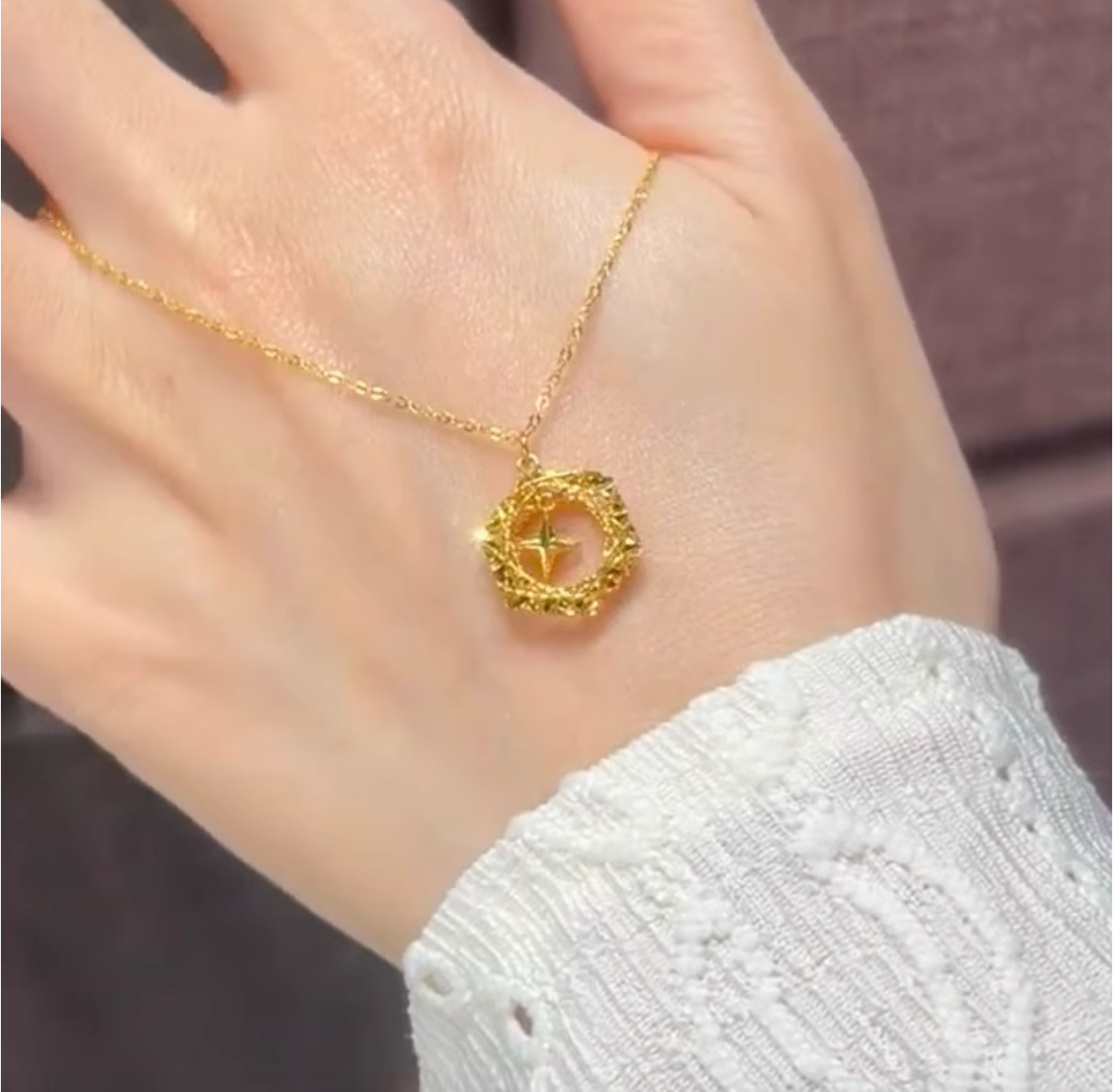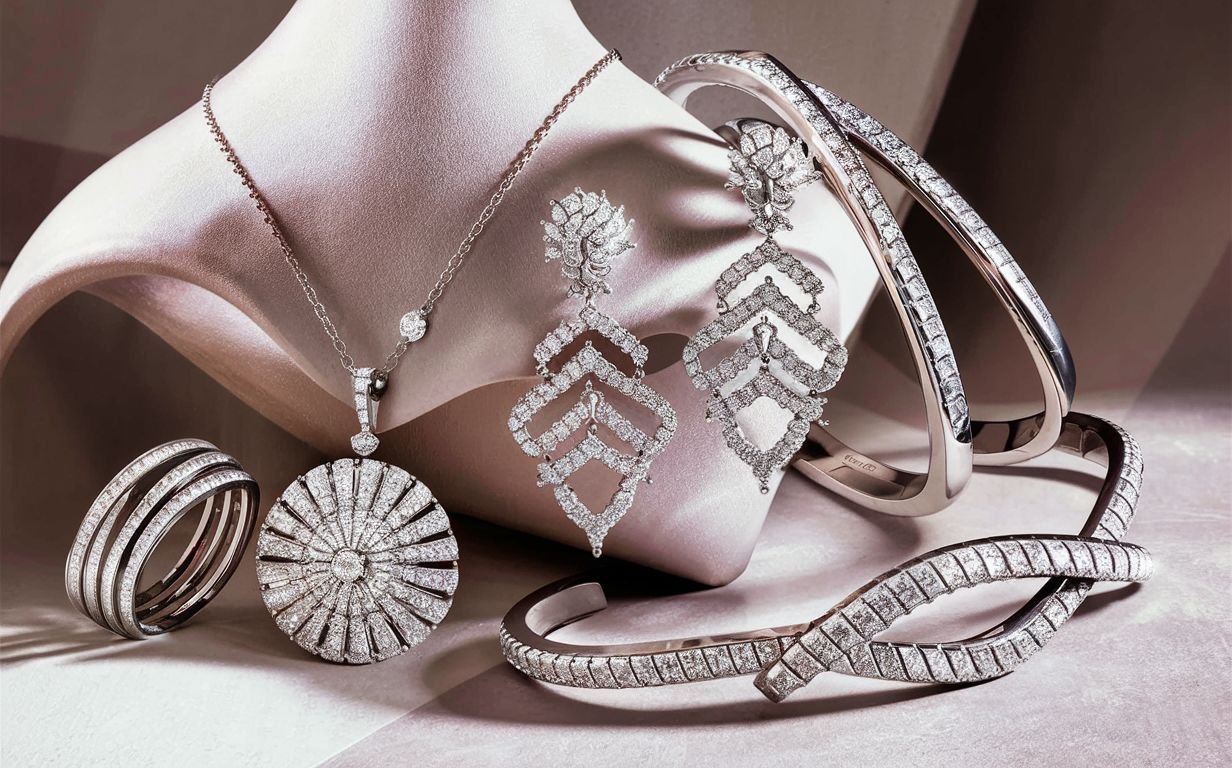
Gold, a symbol of wealth and beauty, has adorned humanity in various forms for millennia. Beyond its gleaming allure, the application of gold in jewelry is a testament to its aesthetic appeal and enduring legacy. However, not all gold is created equal, especially regarding its composition. This distinction is crucial for those with sensitive skin, for whom allergic reactions can mar the joy of wearing gold. Hence the need for this article: Is gold hypoallergenic? The key to navigating this golden landscape is understanding gold alloys and the karat system that measures gold’s purity.
But what exactly makes a piece of gold jewelry hypoallergenic, and how does one choose the right kind to avoid skin irritation? The answer lies in the intricate world of gold alloys.
These are mixtures of gold with other metals that enhance durability but can also introduce elements that some may find irritating. We uncover a spectrum of hypoallergenic properties as we delve deeper into the world of gold karats, from the pure 24k to the more commonly worn 14k and 10k varieties. Each karat level offers a different experience for the wearer, balancing beauty with comfort.
This article will discuss the relationship between gold’s purity and its hypoallergenic nature.
Is Gold Hypoallergenic? – Understanding Gold Karats
At the heart of our golden journey is the karat, a measure representing gold’s purity and, thus, its material and aesthetic value. To understand gold’s allure and its interaction with sensitive skin, it’s essential to grasp what karats signify and how they influence the creation of the jewelry we cherish.
The Essence of Karats
The karat system quantifies the purity of gold, with 24 karats (24k) signifying pure gold. However, while rich in color and luster, pure gold is soft and malleable, making it impractical for everyday jewelry. This is where the concept of gold alloys comes into play. An alloy blends gold with other metals, enhancing strength, altering color, and affecting cost. The karat number tells you how many parts out of 24 are pure gold; thus, 18k gold is 18 and 6 parts other metals, translating to 75% gold purity.
Why Alloy Gold?
Alloying Gold serves multiple purposes:
- Durability: Adding metals like copper, silver, or zinc strengthens gold, making it suitable for intricate designs and daily wear.
- Color Variation: Gold’s color can be altered through alloying, creating the diverse palette of white, rose, and yellow gold that adorns jewelry displays.
- Cost-Effectiveness: Higher karat golds are more expensive due to their higher content. Lower karat golds offer more affordable options while maintaining gold’s intrinsic value.
Alloying is a delicate balance, aiming to retain gold’s natural beauty and value while enhancing its practicality for jewelry making. This process is particularly relevant when considering hypoallergenic properties, as the choice of alloying metals can significantly impact a piece’s suitability for sensitive skin.
Understanding gold karats and the alloying process is the first step in selecting hypoallergenic jewelry. As we move through the spectrum of gold karats, from the pure 24k to the more commonly utilized 18k, 14k, and 10k varieties, the nature of the metals mixed with gold becomes a critical factor for those with skin sensitivities.
Common gold alloys in jewelry-making
In gold jewelry, knowledge is not just power—it’s comfort. By comprehending the essence of gold karats and the rationale behind alloying, enthusiasts and those with sensitive skin alike can confidently navigate the golden array, selecting pieces that marry beauty with gentleness on the skin.
Is 24 karat Gold Hypoallergenic?
Among the various types of gold used in jewelry, 24k gold stands out for its unparalleled purity and luster. 24k gold is the highest and purest form of gold.

Characteristics of 24k Gold
Purity: 24k gold is 100% pure gold (more commonly called 99.99%) without adding other metals. This level of purity gives it a distinct, rich yellow color that is both striking and elegant. Its natural luster and warmth are often associated with luxury and status, making it highly prized in various cultures worldwide.
Softness: Due to its purity, 24k gold is relatively soft and malleable compared to lower-karat gold alloys. While lending itself to intricate and detailed craftsmanship, this characteristic also means that 24k gold is more prone to scratches, dents, and deformation. As such, its use in jewelry is often reserved for pieces that are not subject to frequent wear and tear, such as ceremonial or decorative items.
Uses in Jewelry
Given its softness, 24k gold is not typically used for everyday jewelry pieces like rings or bracelets that can easily be damaged. Instead, it finds its place in:
- Investment pieces: Gold bars, coins, and ingots are often made of 24k gold, serving as a store of value.
- High-end jewelry: Some luxury jewelry designers create exclusive 24k gold pieces, embracing the metal’s purity for its aesthetic and intrinsic value.
- Cultural and ceremonial adornments: In many cultures, 24k gold is preferred for wedding jewelry, religious artifacts, and other significant ceremonial items, symbolizing purity, prosperity, and blessings.
Is 24k Gold Hypoallergenic?
The hypoallergenic nature of 24k gold is one of its most compelling attributes, especially for individuals with sensitive skin or metal allergies. The absence of alloyed metals such as nickel, copper, or zinc, which are common in lower karat gold and can trigger allergic reactions, makes 24k gold an ideal choice for those seeking purity and safety in their jewelry. This means that 24k gold jewelry is, indeed, hypoallergenic as it’s less likely to cause skin irritation, redness, or allergic dermatitis, providing a comfortable wear experience for even the most sensitive skin types.
Is 22 karat Gold Hypoallergenic?
Just a step down from the pinnacle of purity, 22k gold offers a compelling blend of high gold content with the added durability of a minimal alloy mix. Let’s find out the composition, typical uses, and hypoallergenic qualities of 22k gold, shedding light on why it remains a popular choice for those who value both the traditional appeal of gold and the practicalities of daily wear.

Composition of 22k Gold
High Gold Content: 22k gold is composed of approximately 91.7% pure gold, with the remaining 8.3% comprising other metals such as copper, silver, and sometimes zinc. This slight dilution of pure gold enhances its strength and durability without significantly compromising the metal’s value and luster.
Alloy Mix: The specific metals used in the alloy mix of 22k gold can vary, but the objective is always to strike a balance—reinforcing the gold’s structure while maintaining its rich, warm hue. Copper and silver are commonly used for this purpose, lending 22k gold jewelry a slightly harder finish than its 24k counterpart, making it more resistant to wear and tear.
Typical Uses in Jewelry
22k gold’s enhanced durability and high gold content make it an ideal choice for various jewelry pieces that are meant to be worn regularly yet require a degree of softness for detailed artistry.
- Fine Jewelry: 22k gold is often used in fine jewelry, including necklaces, earrings, and pendants, where its purity can be showcased in intricate designs.
- Wedding and Engagement Rings: In many cultures, 22k gold is the preferred choice for wedding bands and engagement rings, symbolizing the bond of marriage, wealth, and prosperity.
- Heritage Pieces: The high gold content of 22k makes it suitable for heritage and heirloom jewelry, which are treasured for their beauty and value over generations.
Is 22k Gold Hypoallergenic?
While no gold alloy can be considered completely hypoallergenic due to the presence of other metals, 22k gold comes close, thanks to its minimal alloy content. So, let’s try to answer the question of whether 22k gold is hypoallergenic in this manner:
Minimal Risk of Allergic Reactions: The high percentage of pure gold in 22k reduces the likelihood of skin irritation for most wearers. Unlike lower karat golds, where nickel and other allergenic metals are higher, 22k gold’s alloy composition is less likely to provoke allergic responses.
Considerations for Sensitive Skin: The specific alloy composition should be considered for individuals with known allergies to copper or silver. However, the risk remains significantly lower than gold alloys with a higher percentage of mixed metals.
Is 18k gold Hypoallergenic: To 18 or Not To 18?
In gold jewelry, 18k gold occupies a sweet spot, offering a harmonious balance between the innate beauty of gold and the practicality required for everyday wear. With its rich color and considerable durability, this alloy is a versatile choice for a wide array of jewelry. Here, we delve into the characteristics of 18k gold, highlighting its composition, typical uses, and its standing as a hypoallergenic option for jewelry enthusiasts.

Composition and Characteristics of 18k Gold
Optimized Gold Content: 18k gold comprises 75% pure gold, with the remaining 25% composed of other metals, such as copper, silver, and occasionally palladium or nickel. This composition maintains the gold’s captivating luster and significantly enhances its resistance to wear and deformation.
Enhanced Durability: Including other metals in 18k gold strengthens the alloy, making it more suitable for the rigors of daily jewelry use. This durability ensures that 18k gold pieces retain shape and detail over time, even with regular wear.
Typical Uses in Jewelry
Due to its appealing balance of purity and practicality, 18k gold is favored for a broad spectrum of jewelry, including items that are both ornamental and functional, similar to 22k gold above:
- Engagement and Wedding Rings: Its resilience to scratching and tarnishing makes 18k gold popular for engagement rings and wedding bands, symbols of enduring love.
- Fine Jewelry: Earrings, necklaces, bracelets, and watches crafted from 18k gold are luxurious and durable, ideal for everyday elegance.
- Heirloom Pieces: The lasting beauty and wearability of 18k gold make it suitable for creating heirloom jewelry that can be passed down through generations.
Is 18 Karat Gold Hypoallergenic – Hypoallergenic Properties
The hypoallergenic quality of 18k gold is a significant consideration for individuals with sensitive skin or allergies to certain metals:
Higher Gold Ratio, Lower Allergen Risk: With a higher proportion of gold to other metals, 18k gold jewelry is less likely to cause allergic reactions compared to lower karat golds, although, compared the 22k gold, it has a higher risk chance of allergic reaction with very delicate skin individuals.
Nonetheless, the reduced presence of potentially irritating alloy metals like nickel—often implicated in skin allergies—means that 18k gold is generally well-tolerated by most gold.
Choosing Wisely for Sensitive Skin: For those with specific metal sensitivities, it’s important to inquire about the exact composition of the 18k gold alloy, as the choice of non-gold metals can vary. Opting for 18k gold alloyed with hypoallergenic metals such as palladium rather than nickel or copper can further minimize the risk of skin irritation.
Is 14k Gold Hypoallergenic?
In the landscape of gold jewelry, 14k gold emerges as a favorite, striking an admirable balance between purity, practicality, and affordability. This section explores the reasons behind 14k gold’s prominence in the jewelry industry and discusses the potential allergenic metals that may be part of its alloy mix.

Is Gold Hypoallergenic?
Commonality and Advantages
Widespread Use: 14k gold, comprising 58.3% gold and 41.7% alloyed metals, is the most commonly used gold in the United States for fine jewelry. Its popularity stems from its optimal blend of durability and luster, making it suitable for various jewelry pieces, from intricate designs to everyday items.
Durability: The alloyed metals in 14k gold, including copper, zinc, and sometimes nickel, lend it a hardness and resistance to wear and tarnish that pure gold lacks. This makes 14k gold jewelry more resilient and capable of withstanding the rigors of daily use without significant loss of shape or shine.
Potential Allergenic Metals
While the durability of 14k gold is a boon, the inclusion of other metals to achieve this durability can introduce allergens that might not be suitable for all skin types:
Nickel Content: Nickel, commonly used in 14k gold alloys for its strength, is a known allergen that can cause contact dermatitis in sensitive individuals. The presence of nickel in 14k gold jewelry, though beneficial for structural integrity, necessitates caution for those with nickel allergies.
Copper and Zinc: Though less commonly allergenic than nickel, copper and zinc can also cause skin reactions in a minority of individuals. Buyers with sensitive skin need to be aware of the specific alloy composition of their 14k gold jewelry.
Is 10k Gold Hypoallergenic?
10k gold stands out for having the highest alloy content among gold types commonly used in jewelry, making it exceptionally durable and raising questions about its hypoallergenic properties.
Composition and Practicality
High Alloy Content: With only 41.7% gold and 58.3% alloyed metals, 10k gold is the least pure form of gold jewelry commonly available. This composition significantly enhances its hardness and resistance to scratching and denting, making 10k gold an attractive option for jewelry that demands high durability.
Affordability: The lower gold content makes 10k gold more affordable than its higher-karat counterparts. This accessibility and its durability have contributed to its popularity, especially for items like school rings, sports jewelry, and other pieces where longevity and cost are significant considerations.
Is 10 Karat Gold Hypoallergenic – Hypoallergenic Considerations
Given its substantial proportion of alloyed metals, 10k gold’s hypoallergenic status is more complex:
Increased Potential for Allergens: The higher concentration of metals such as nickel, copper, and zinc in 10k gold increases the likelihood of allergic reactions for individuals with metal sensitivities. This is an important consideration for buyers prioritizing hypoallergenic properties in their jewelry choices.

Informed Selection: For those concerned about allergies but drawn to the benefits of 10k gold, seeking out pieces labeled “nickel-free” or inquiring about the exact alloy composition can help mitigate potential skin irritation.
Factors Influencing Hypoallergenic Properties of Gold
When it comes to selecting gold jewelry, understanding the factors that influence its hypoallergenic properties is crucial for those with sensitive skin or allergies. The composition of gold alloys, incorporating metals like nickel, copper, and zinc, plays a significant role in how skin reacts to the jewelry. Additionally, individual sensitivities and allergies dictate which gold alloy might be considered hypoallergenic for each person.
Impact of Alloy Metals on Skin Sensitivity
- Nickel: Often used to harden gold, nickel is one of the most common causes of contact dermatitis. Its presence in an alloy can significantly increase the risk of allergic reactions.
- Copper: While less allergenic than nickel, copper can still cause skin irritation for some individuals, especially in higher concentrations found in lower-karat gold.
- Zinc: Generally considered to be less likely to cause skin irritation, zinc is a common component in gold alloys. However, reactions can still occur, albeit rarely.
Individual Sensitivities and Allergies
Every person’s skin reacts differently to various metals. What is hypoallergenic for one individual may cause an allergic reaction in another. This variability underscores the importance of knowing one’s allergies and sensitivities when choosing gold jewelry.
Choosing Hypoallergenic Gold Jewelry
For those looking to minimize the risk of allergic reactions, the following tips can guide the selection of hypoallergenic gold jewelry:
- Opt for Higher Karat Gold: Higher karat golds, such as 18k or 22k, contain a greater proportion of gold and fewer alloy metals, reducing the risk of skin irritation.
- Inquire About Specific Alloys Used: Knowledge is power. Asking about the metals used in an alloy can help you avoid known allergens.
- Seek Certifications or Assurances: Reputable jewelers may offer certifications or assurances of their products’ hypoallergenic properties. Look for items certified as “nickel-free” or endorsed by dermatological associations.
Caring for Gold Jewelry to Maintain Hypoallergenic Qualities
Maintaining the hypoallergenic nature of gold jewelry involves proper care and handling. Here are some recommendations:
- Regular Cleaning: Use a gentle, non-abrasive cleaner to remove oils, sweat, and other substances that can accumulate on jewelry and potentially irritate the skin.
- Proper Storage: Keep your gold jewelry in a dry, cool place, ideally in a lined jewelry box or pouch, to prevent exposure to environmental factors that could degrade its hypoallergenic properties.
- Avoid Harsh Chemicals: When wearing gold jewelry, avoid exposure to harsh chemicals, including chlorine and certain cleaning agents, which can react with the metals in an alloy and increase the risk of skin irritation.
Conclusion – Is Gold Hypoallergenic?
The quest for hypoallergenic gold jewelry is a nuanced journey influenced by the composition of gold alloys and individual skin sensitivities. By choosing higher karat gold, being informed about alloy compositions, and caring properly for your jewelry, you can enjoy the timeless beauty of gold with minimal risk of allergic reactions. Remember, understanding your sensitivities and selecting jewelry accordingly is key to ensuring skin health and the enduring allure of your gold pieces.


